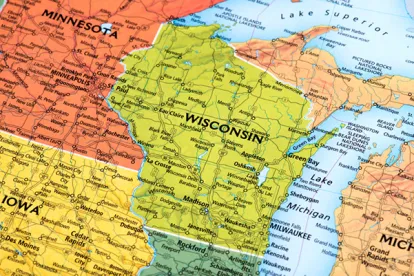In December 2022, the Wisconsin Natural Resources Board (NRB), the board that establishes policy for the Wisconsin Department of Natural Resources (WDNR), voted to allow the WDNR to move forward with developing regulatory standards for per- and polyfluorolalkyl substances (PFAS) in groundwater.
It is anticipated that the WDNR’s process of gathering data, researching safe concentrations of PFAS, and adopting groundwater regulatory standards to be incorporated into Wisc. Admin. Code Section NR 140 could require as much as one to two years, as the proposed standards have to go through a stringent rule-making process and be reviewed by the State Legislature before they are adopted. Groundwater is the source of potable drinking water for approximately two-thirds of the state’s residents. The WDNR has identified approximately 90 sites throughout Wisconsin with PFAS contamination, including municipalities such as Madison, Marinette, Peshtigo and Wausau with PFAS-contaminated groundwater. Due to the contaminated groundwater, some communities have had to use bottled water for the past several years. While the adoption of groundwater regulatory standards would not eliminate the issue of contamination that is present in the drinking water of these communities, it would provide a regulatory standard as to what concentrations of PFAS are considered safe to prevent further contamination.
Groundwater and PFAS Background
In February 2022, the NRB had previously reviewed a proposal by the WDNR to establish a groundwater “Enforcement Standard” (ES) of 20 parts per trillion (ppt) to be incorporated into Wisconsin Administrative Code Section NR 140 for two PFAS compounds, perfluorooctanoic acid (PFOA) and perflourooctane sulfonic acid (PFOS), two of the most common PFAS chemicals that have been historically used in numerous manufactured products. However, the NRB rejected the proposed standard at that time in part due to opposition that the federal government had not yet adopted groundwater standards for PFAS. As of this writing, the federal Environmental Protection Agency (EPA) has not adopted PFAS groundwater standards. However, in a related action, on June 15, 2022 the EPA issued a Drinking Water Health Advisory which recommended health advisory levels in drinking water supplies for PFOA and PFOS of 0.004 parts per trillion (ppt) and 0.02 ppt, respectively. The previously recommended EPA drinking water health advisory level was 70 ppt. While the EPA has issued these health advisory levels for PFOA and PFOS, to date, the EPA has not adopted regulatory standards for any PFAS chemicals in drinking water, but it is expected that the EPA will issue a proposed National Primary Drinking Water Regulation for PFOA and PFOS, within the next year.
PFAS are chemicals that were widely used from the 1960s to the early 2000s in the manufacture of a variety of consumer products, such as stain resistant carpets, non-stick cookware (e.g., Teflon), firefighting foam, food packaging (e.g., microwave popcorn bags/pizza boxes), water resistant clothing (e.g., pre-2000 GoreTex), water resistant repellent (e.g., Scotchgard) and dental floss. While the manufacture of PFAS compounds has largely been phased out in the U.S., these compounds are still used in the manufacturing of many products worldwide, and products containing PFAS are still imported to the U.S. These substances, known as “forever chemicals,” have received considerable attention by federal and state environmental regulatory agencies because of their resistance to chemical breakdown due to the chemical bond between carbon and fluorine atoms in the PFAS compounds, which is one of the strongest in nature. Because of this, humans can still be exposed to PFAS long after the chemicals were released into the environment.




 />i
/>i

